Resources you can trust

Space exploration STEM teaching pack
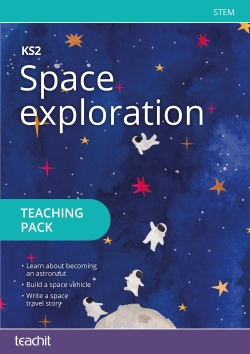
Journey into space with this Space exploration STEM teaching pack for KS2. Visit the International Space Station, find out if pupils have what it takes to become an astronaut and design a space vehicle for space travel.
This fully resourced , no-prep pack contains everything needed for a fun approach to STEM learning .
Who’s the pack for? This pack has been designed for a primary school science unit on space exploration aimed at KS2 . It can be used in conjunction with existing curriculum materials or as a standalone space science unit.
Suitable for both new and more experienced teachers, you'll find a variety of fun STEM activities that can be differentiated to suit different types of learners , with engaging extension activities to ensure pupils are challenged.
What’s included?
This comprehensive pack has detailed lesson plans with step-by-step instructions, ideas for enhancing and extending learning and a handy teacher assessment sheet. Lesson plans are linked to ready-to-use printable teaching resources , handouts and worksheets in the teacher pack and pupil pack.
For the teacher
- Lesson plans, formative and summative assessment opportunities, extension activities and homework tasks.
- A Teacher pack with accompanying learning resources and printable worksheets with answers.
For the pupil
- A Pupil pack with colourful learning worksheets and clear guidance for all tasks.
- Fun activities to learn all about space exploration, including virtual tours, research tasks and design tasks.
How is the pack structured? The pack consists of five milestones , which if completed in sequence will build pupils' knowledge to enable them to complete a summative assessment activity in the final milestone.
Lesson activities are organised as follows:
- Prepare (Bell-ringer/starter activity)
- Present (Teach/model)
- Produce (Pupil project work)
- Participate (Pupil/group share)
- Practise (Homework/assessment/independent activities)
What's inside?
Milestone 1 : Building background knowledge of space exploration
- Explore different NASA astronaut training activities and then explain the steps in the astronaut selection process.
- Explain why it is so hard to become an astronaut.
Milestone 2 : Famous astronauts
- Answer questions about a famous astronaut by conducting research.
- Explain the characteristics of successful astronauts.
Milestone 3 : Spacecraft and space travel
- Explore the changes in spacecraft over time.
- Identify the parts of a spacecraft and explain what they do.
- Design a vehicle to travel in space.
Milestone 4 : Building a new space vehicle
- Explain the changes in spacecraft over time.
- Design their own spacecraft.
Milestone 5 : Describing a trip to space
- Write a story about a journey into outer space.
- Explain if they would like to be an astronaut.
How to use this teaching pack This pack should be used for teaching and reinforcing concepts in a primary school science unit for KS2 . It is designed to be flexible and can be used as a standalone space science unit or in conjunction with other curriculum materials, STEM resources or STEM lessons. The teaching pack is designed to be delivered over five lessons but can be dipped into to supplement other learning plans.
Explore more resources like this Try our Solar system STEM teaching pack , browse our STEM teaching packs or explore Teachit Primary’s complete collection of teaching packs .
We’d like to thank colleagues at TeacherVision.com for allowing us to re-use their original content.
All reviews
Resources you might like.
©Copyright Mandy Barrow 2013 primaryhomeworkhelp.com
Follow me on Twitter @mbarrow
This website uses cookies in order to provide basic functionality. By continuing to use this website, you are consenting to their use. For more information, please read the relevant part of our privacy policy .
Primary Science Resources for the National Curriculum
Year 5 earth and space.
- Outstanding Science Year 5
- Earth And Space
Knowledge and Understanding
Statutory requirements, notes and guidance, upper ks2 - working scientifically, planet facts worksheet free, outstanding science year 5 | earth and space | os5d002.
- Description
- National Curriculum
- Key learning
Learning objective
I can research and compare the different planets in the solar system.
Children learn about 3 different planet classifications - terrestrial, gas giant, and ice giant. They carry out a networking activity where each child has a sheet containing incomplete information and they find out the missing data from their classmates. They discuss various ways of comparing, grouping and ordering the planets.
- 5d1 : describe the movement of the Earth, and other planets, relative to the Sun in the solar system
The solar system Worksheet
Outstanding science year 5 | earth and space | os5d001.
I can explain how the Earth and the other planets in the solar system move.
Children cut out pictures of the Sun and the eight major planets of the solar system and use them to complete a diagram by placing them in order of distance from the Sun.
Earth, Sun and Moon Worksheet
Outstanding science year 5 | earth and space | os5d003.
I can explain how the Moon moves.
Children learn how the Moon moves around the Earth. They learn about theories of the Moon's formation, and that it has been explored. Children create an information text answering the questions 'How do the Earth and Moon move?', 'How was the Moon formed?', and 'Has the Moon been explored?', and complete a diagram showing the movement of the Earth and Moon.
- 5d2 : describe the movement of the Moon relative to the Earth
The lunar cycle Worksheet
Outstanding science year 5 | earth and space | os5d004.
I can explain how the Moon's appearance appears to change when viewed from Earth.
Children complete a diagram showing the eight phases of the Moon and why the Moon's appearance seems to change.
The formation of the solar system Worksheet
Outstanding science year 5 | earth and space | os5d005.
I can explain how the solar system was formed.
Children complete an information text explaining the latest model of the origins of the solar system.
- 5d3 : describe the Sun, Earth and Moon as approximately spherical bodies
Comparing the planets Worksheet
Outstanding science year 5 | earth and space | os5d006.
I can compare the sizes of the planets in the solar system.
Children look at diagrams of the planets which are in proportion to one another. They use an 'Earth ruler' to measure the diameter of the planets in Earth diameters in order to compare them to the Earth. They then use a ruler marked in cm to measure the diameter, before using a formula to calculate their true size. They record their data in a table and look for patterns. Children can use the planet diagrams to make a display.
Day and night Worksheet
Outstanding science year 5 | earth and space | os5d007.
I can explain how day and night are caused.
Using a split pin, children create a moving model showing how the rotation of the Earth causes day and night. They move their model through a day and night cycle, using speech bubbles to explain what they would experience at each stage of the cycle.
- 5d4 : use the idea of the Earth’s rotation to explain day and night and the apparent movement of the sun across the sky.
Making a sundial Investigation
Outstanding science year 5 | earth and space | os5d008.
I can make a sundial and explain how it works.
Using a template, children cut out and assemble their own sundial. They carefully attach the gnomon (shadow caster). On a sunny, rain and wind-free day, children calibrate their sundial by fixing it in position and marking where the shadow of the gnomon falls at 9am, 10am, 11am, 12pm, 1pm, 2pm and 3pm. Children predict where the 4pm shadow line would fall.
Get instant access to all of our Year 5 resources.
Outstanding science - year 5 contains all of the following units:.
Unit 5A - Living Things And Their Habitats
Unit 5B - Animals, Including Humans
Unit 5C - Properties And Changes Of Materials
Unit 5D - Earth And Space
Unit 5E - Forces
Outstanding Science
Primary science resources.
Browse resources
128 Gordon Drive Dovecot Liverpool England L14 7PZ
0151 558 1485
Terms and conditions
Privacy policy

Outstanding Science © Copyright Minerva Education Ltd. 2015-2024. Responsive design built upon Bootstrap .
- STEM Ambassadors
- School trusts
- ITE and governors
- Invest in schools
- STEM careers inspiration
- Benefits and impact
- Our supporters
- Become a STEM Ambassador
- Request a STEM Ambassador
- Employer information
- Training and support
- STEM Ambassadors Partners
- Working with community groups
- Search icon
- Join the STEM Community
Space: Practical Resources
These resources all include practical activities with a space theme. They range from KS2 up to KS4 and cover many of the concepts with the curriculum, as well as being useful for STEM clubs or extra-curricular activities.
Is There Anyone Out There?
Quality Assured Category: Science Publisher: ESERO-UK
This is a brilliant resource for Primary, with fun experiements that are easy (and cheap!) to do. It was produced with help from scientists working on Mars projects at Imperial College and written by experienced primary teachers.
The activities use scientific enquiry to explore three themes: life, landing and the landscape on Mars.

STFC Lunar Rocks and Meteorites Loan Scheme: Secondary Resources
Quality Assured Category: Science Publisher: Science and Technology Facilities Council - UKRI
Developed by ESERO-UK and the Association for Science Education, this resource contains practical activities using the Moon and meteorites as a context to engage students in scientific enquiry. They were developed to be used with the STFC Lunar Rocks and Meteorites Loan Scheme but can also be used independently.
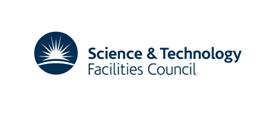
We Are Aliens!
Quality Assured Collection Category: Careers Publisher: We Are Aliens!
This collection of resources was developed by the National Space Academy and includes practical activities for biology, chemistry and physics. Videos and worksheets are included. Topics covered include:
• Cell biology • Food tests, including starch, sugar, protein and fat • Respiration • Enzymes & rates of reaction • Microbiology • Aseptic technique • Cell organelles
• Bonding and molecular shape • Carbon cycle • Experimental design • Reaction rates

Robert Smyth Academy
Quality Assured Category: Science Publisher: Robert Smyth Academy
A plethora of chemistry activities KS3 to post-16, developed by teachers from one of the Leading Space Schools. Activities cover topics such as rates of reaction, combustion and enthalpy.

International Space Station (ISS) Education Kit - Lower Secondary
Quality Assured Category: Science Publisher: European Space Agency (ESA)
This is a great space resource for secondary schools.
The first place to start with this resource is pages 4 and 5 of the Teacher's Guide, which gives a list of subjects and topics represented in the exercise units. In addition to science, subjects include mathematics, social science, art, creative writing, history and geography.
The exercise units contain information and fun practical activities related to the International Space Station e.g. making balloon rockets, robotic arms, a water filtration system.


Teaching Astronomy and Space: Expand Your Horizons
Quality Assured Collection Category: Science Publisher: Institute of Physics
This is a great resource for use at secondary level.
The videos in this resource are ideal for use in class - they are in small chunks (about 5 mins) and presented by scientists at a level accessible to secondary students.
The classroom demonstrations are short instructional videos for teachers - many of which are very simple to replicate in the classroom.

Rocket Science Activities
Quality Assured Category: Design and technology Publisher: NASA
This is the number 1 comprehensive rocket guide for teachers. If you want to do experiments with rockets then this guide contains 16 rocket activities - spanning all age ranges. There is also a well written history of rockets and a guide to the physics of rocketry, appropriate for secondary school students. The rocket activities range from easy-to-make, low power rockets to more complex high powered rockets. The IOP do a make-and-take using one of the more complex rocket designs.
Space-based Astronomy Educator Guide
Quality Assured Category: Science Publisher: NASA
This guide has some good practicals and information on astronomy and has student worksheet appropriate for use in the classroom. The notes on educational standards are for the US.
The introduction to this guide gives a brief, but fairly comprehensive, history of US spacecraft used for astronomy up to the Year 2000.
The guide contains 4 units with practicals and student worksheets:
Unit 1 looks at the atmosphere and gives five practical demonstrations to model how the atmosphere distorts em radiation.
Unit 2 looks at the em spectrum and describes how to build a simple spectroscope, redshift and blue shift using a doppler ball and wavelength and resonance praticals
Unit 3 looks at telescopes and how to build a simple refracting telescope, and a liquid crsytal sheet to demonstrate infra-red detection
Unit 4 contains four practicals which investigate images processing, using colour and coding with binary numbers
Unit 5 gives web links (some outdated at the time of this comment 2012)
There is also a glossary of terms and suggested reading
Science and Engineering on the Moon Challenge
The materials used for the engineering tasks are easy to obtain but the build will challenge your students. The first two engineering challenges can be used a primary level as well as secondary. Ideas about motion, forces and energy are covered. Students are encouraged to design, test, evaluate and improve on their designs.
I Wouldn’t Send a Dog Out on a Night Like This!
Quality Assured Category: Science Publisher: University of Leicester
Putting a new twist on the old "insulating a house" activity - this resource looks at designing the best insulation for a lander on Mars.
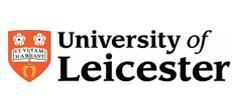
- Create new account
- Reset your password
Register and get FREE resources and activities
Ready to unlock all our resources?
Space exploration
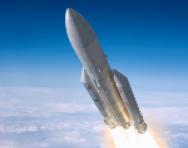
What is space exploration?
Space exploration is sending people or machines into space to visit other planets and objects in space. Mankind has dreamed of visiting the stars for hundreds of years, but it wasn’t until 1969 that the first person walked on the Moon.
Since the first person walked on the Moon, hundreds of satellites have been launched into orbit around the earth, and hundreds of people have been into space on lots of different types of spacecraft. We have also sent machines to investigate objects that are further away in the Solar System.
Top 10 facts
- The first person in space was Yuri Gagarin from the Soviet Union, who travelled into orbit around the Earth in 1961 .
- The first man to walk on the Moon was an American called Neil Armstrong in 1969 .
- The Moon is the only place in space apart from Earth that humans have set foot on.
- People who fly into space are called astronauts. They have to be very careful about what they eat and what exercise they do to stay healthy while they are in space.
- A spacecraft needs to travel at 11,000 miles per hour to get into orbit around the Earth.
- Spacecraft use huge rockets to carry them into space.
- The most famous type of spacecraft was the Space Shuttle. There were five Space Shuttles and one prototype – between them they flew 135 missions into space.
- Out of billions of people who live on Earth, only 535 have been into Orbit, and only 12 have ever walked on the Moon.
- The International Space Station is the biggest space station ever built. It can hold a crew of six people.
- In 2012 a machine made by NASA called ‘Curiosity’ landed on Mars to see if it could find evidence of any creatures or plants having ever lived there.
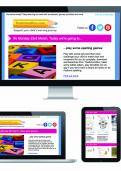
Boost Your Child's Learning Today!
- Start your child on a tailored learning programme
- Maths & English resources delivered each week to your dashboard
- Keep your child's learning on track
Did you know?
- Space starts 100 kilometres (62 miles) above the surface of the Earth.
- The first man to walk on the moon was Neil Armstrong. He was an American who travelled there in 1969 on NASA’s Apollo 11 mission. As he stepped onto the Moon he said, “That's one small step for man, one giant leap for mankind.”
- A satellite is what we call a machine that is launched into orbit around the Earth. Some satellites do things like taking photographs or broadcasting TV channels, and others are used by scientists.
- The first satellite was called Sputnik I and was launched by the Soviet Union in 1957. It circled the Earth for three months.
- When a space mission includes people, we call it a manned space expedition. When it only includes machines, we call it an unmanned expedition.
- Nobody has ever stepped on any object in space apart from the Moon, but we have sent machines to investigate Mars, Jupiter, Saturn and many other places.
- There is no air in space, so astronauts have to take air with them from Earth so that they can breathe. If they want to go outside their spacecraft, they have to wear special airtight clothes called a space suit.
- A space station is a place built in space so that astronauts can live and work in space.
- There is so little gravity in orbit around the Earth that instead of walking on the ground, astronauts in the space shuttles or on the International Space Station float in the air. This is called weightlessness.
- Astronauts have to exercise every day to keep their muscles strong while they are in space. They also have to eat specially prepared foods that are nutritious, easy to prepare and don’t make a mess when you eat them in space. Ice cream is too messy to eat in space so astronauts have to have it freeze-dried so that they can eat it for dessert!
Space gallery:
- An astronaut
- The Apollo 11 Moon landing
- The Soyuz space shuttle
- Buzz Aldrin walking on the Moon
- The launch of the Atlantis
- Neil Armstrong
- Helen Sharman was the first British astronaut
- Yuri Gargarin
- The Sputnik satellite
- The International Space Station
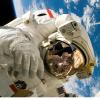
Construction of the International Space Station by Europe, Japan, Canada, Russia and the USA started in 1998 and is still going on today. The International Space Station is the largest object that humans have ever put into orbit. It will be used by astronauts until at least the year 2020.
Space exploration doesn’t just mean sending people into space. We also send machines. Voyager I and Voyager II, launched in 1977, have almost reached the edge of the Solar System and will soon be exploring deep space. They have travelled further from Earth than any other space craft made by man.
Voyager I and Voyager II visited Jupiter, Saturn, Uranus, Neptune and Pluto on their journey through the Solar System .
Apart from the Moon, the most popular place to send unmanned space expeditions is to Mars. Since the year 2000, there have been 10 unmanned expeditions to Mars, including putting spacecraft into orbit around Mars and landing machines called rovers to explore the surface.
Some scientists think that creatures may have lived on Mars millions of years ago, when Mars was warmer and had more air – NASA sent the rover Curiosity to Mars in 2012 to look for evidence of life. They haven’t found it yet, but they are going to keep on looking!
Sending people to investigate Mars might take up to six months just to travel there. Even simple things like making sure that you have enough food to eat are difficult when you have to pack everything into your spacecraft before you leave. You can’t come back if you’ve forgotten something!
During the 1950s and 1960s there was a “Space Race” between the United States of America and the Soviet Union. Both countries thought it was important to be the first to do things in space and were very proud of their achievements. The Soviet Union put the first satellite and the first man into orbit, but the USA was the first to send a man to the Moon.
Now private companies are starting to fly into space too. Virgin Galactic sells tickets for a short trip into space for £130,000! Passengers won’t go high enough to go into orbit, but they will spend about six minutes in space. The whole trip will take two and a half hours from take-off to landing.
Words to know for space exploration:
Astronaut – a person who has travelled in space Curiosity – a large rover sent to Mars by NASA to look for signs of life ESA – the European Space Agency, which consists of all the countries in Europe working together on missions to explore space NASA – the North American Space Agency, which is the organisation from the USA that explores and investigates space Orbit – When something goes into orbit, it is high enough that it keeps circling the Earth, instead of falling back to the ground. Rocket – Rockets burn a lot of fuel to get to very high speeds very quickly. You have to do this if you want to get from the surface of the Earth into orbit. Rover – a mobile robot sent to land on another planet or moon and explore Satellite – a machine put into orbit around the Earth, and often used for science or communications Spacecraft – a vehicle for travelling in space or into space Space Shuttle – Made by NASA, this is the most famous type of spacecraft to be made. Space station – a permanent structure in space where astronauts can live and work Spacesuit – special airtight clothes that keep an astronaut safe and warm outside their spacecraft Sputnik – the first satellite to be put into orbit around Earth Voyager I and Voyager II – spacecraft that were sent to explore the outer parts of the Solar System
Related Videos
Just for fun...
- Have an adventure on Mars and play games and try activities to find out about Mars exploration
- Answer questions about the scientific advancements that led to Apollo 11's successful mission to the Moon in CBBC's Moon Mayhem quiz
- Explore Mars with Nasa's Mars Rovers Game
- A spaceship craft activity to help you think about constructing a real spacecraft
- Learn some space-themed songs
- Use National Centre for Earth Observation resources to think about what Earth looks like from space
- Launch a virtual spacecraft and send it into orbit
- See the true size of space
- What would your age be on other planets ?
- Make your own paper models of spacecrafts
Books about space exploration for kids
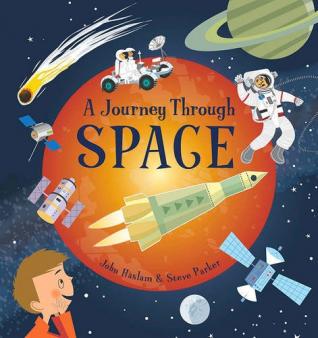
Names to know:
Buzz Aldrin (1930-2012) – He was the second man to walk on the Moon, and was from the USA. Helen Sharman (1963-present) – She was the first person from Britain to travel into space. John F Kennedy (1917-1963) – He was the President of the USA who started the space race and told NASA to send a man to the moon. Neil Armstrong (1930-2012) – He was the first man to walk on the Moon, and was American. Yuri Gagarin (1934-1968) – He was the first man to go into space, and was from the Soviet Union.
Find out more about space exploration:
- An interactive kids' guide to the International Space Station
- Watch an animated video about Neil Armstrong
- NASA: people and technology
- Join historian Greg Jenner for a BBC Sounds kids' homeschool history lesson on the space race
- Discover more about how NASA is searching for planets beyond our Solar System
- The European Space Agency's kids' zone about life beyond Earth
- The Hubble Space Telescope has changed the way scientists look at the universe
- Look through BBC Bitesize's guide to Neil Armstrong , with an animated video and a quiz
- Marvel at the wonders of space with clips from the BBC series, Little Stargazing (suitable for KS1)
- Discover the secrets and stories of Apollo 11 , the first moon mission
- Watch lots of videos from the ESA , including British astronaut Tim Peake's spacewalk
- Expand your knowledge with some brilliant apps about space to use on a tablet computer or phone
- Read brilliant books for KS1 and KS2 about the moon landings and space exploration
See for yourself
- Visit the amazing gallery on space travel in the Science Museum in London.
- See more about human exploration of space at the National Space Centre in Leicester.
- Take a complete, 25-minute tour of the International Space Station with the Space Station Captain
- Might you be on one of Virgin Galactic 's first trips to space?
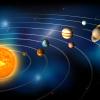
Give your child a headstart
- FREE articles & expert information
- FREE resources & activities
- FREE homework help
- International
- Schools directory
- Resources Jobs Schools directory News Search

KS2 Art lesson sequence on Space, ideal for Space topic
Subject: Art and design
Age range: 7-11
Resource type: Unit of work
Last updated
6 October 2021
- Share through email
- Share through twitter
- Share through linkedin
- Share through facebook
- Share through pinterest

Easy to follow unit for art based on the Retro Futurist aesthetic, all on one powerpoint. Fits neatly in with a space topic, and week by week explores different art techniques to building up to producing a final composition based on a view of a planet in outer space. Resources are listed at the start of each lesson. Please leave a review or comment if you found useful. Overview and knowledge organisor to be added soon!
Creative Commons "Sharealike"
Your rating is required to reflect your happiness.
It's good to leave some feedback.
Something went wrong, please try again later.
Fantastic planning and slides! Do you have any examples of the final composition - it would really help me to demonstrate what the children are aiming towards
Empty reply does not make any sense for the end user
cbutler33_306
Engaging and thorough. Thanks for sharing!
Very good planning.
alisonrawsthorne
What a great resource! Lots of information and images to support lessons.
Amazing thank you so much! Saved me a lot of time!
Report this resource to let us know if it violates our terms and conditions. Our customer service team will review your report and will be in touch.
Not quite what you were looking for? Search by keyword to find the right resource:

IMAGES
VIDEO
COMMENTS
Tim Peake and Fran Scott explore how astronauts make the trip from the International Space Station back to Earth. Tim Peake: Ask an astronaut. Select from the list of questions to find out about ...
Designed for KS2 learners this fully illustrated, ready-to-use lesson provides an interesting and engaging introduction to Earth and space. It covers national curriculum for science topics including the solar system, geocentric and heliocentric theories and how to tell the time using the Sun. Also featured are some of the astronauts who have ...
KS2 children will benefit from fun activities, worksheets, PowerPoints, assessment materials and much more. Some of our favourite Earth and Space KS2 resources are: My Moon Diary: This moon diary worksheet contains a lovely template, where children can track the different lunar moon phases.
Year 5: Earth and Space. This list consists of lesson plans, activities and video clips to support the teaching of Earth and Space in Year Five. It contains tips on using the resources, suggestions for further use and background subject knowledge. Possible misconceptions are highlighted so that teachers may plan lessons to facilitate correct ...
KS2 Science: Earth, space and the solar system. A collection of down-to-Earth facts about our planet and its place in the solar system. This collection introduces the Sun as the main source of ...
art and design. Simply follow the links on this handy resource for space topic planning. KS2 activities, checklists, display materials and more are just waiting to be used as part of a series of exciting lessons all about space. You'll find links to 16 different teacher-made resources and even more useful suggestions for learning opportunities.
This pack has been designed for a primary school science unit on space exploration aimed at KS2. It can be used in conjunction with existing curriculum materials or as a standalone space science unit. ... Lesson plans, formative and summative assessment opportunities, extension activities and homework tasks. A Teacher pack with accompanying ...
These primary science resources on Space and the planets can be a great help during the lesson planning process. You'll find teacher-made worksheets, activities, crafts and display resources to assist you in teaching your young children all about Space. Beautifully designed and available in a range of formats, these primary resources on Space ...
This unit pack will kindle your pupils interest and excitement about the mind-boggling subject of space. This Earth and space KS2 planning resource contains a galaxy of fantastic worksheets that will make learning about space as breezy as an asteroid! The resources within this unit pack will leave your class starry-eyed, from discovering the ...
You can use this fantastic resource to take the stress out of planning and inspire your space-themed lessons. It has been created by our team of experienced teachers, so you can rest assured that it covers all aspects of the KS2 framework. Although this pack is suitable for use at any time of the year, it would be ideal for use during World Space Week. Activities, display materials ...
In this video, Twinkl Teacher Saleena shows you a fantastic range of KS2 Earth and Space resources and activities to help support your Earth and space topic ...
pptx, 4.26 MB. pptx, 805.2 KB. A series of seven lessons about Space incorporating KS2 N.C objectives for Geography and History. All Power Points and worksheets provided. The lesson objectives are the following: To explore the key historical events of space exploration. To plan a successful journey. To recognise why people sent animals into space.
Space websites for Kids to help them with their homework research. Information on Space and the Solar System. The moon is. The Earth is The sun is. about 2,000 miles. about 8,000 miles. about 800,000 miles (3,250 km) wide (13,000 km) wide (1,300,000 km wide. How many planets are there in our solar system?
We've collated some of the best ideas and activities to use for a KS2 space topic in all curriculum areas.
Space Sats Questions . CYMRU Interactive Resources . Earth and space Why we have day time and night time on Earth, seasons and why the moon appears a different shape over the month . All about space Find facts about the Earth, the moon and the solar system. Planets, moons and their dark sides Learn about the Earth, moon, planets and the sun
5d1: describe the movement of the Earth, and other planets, relative to the Sun in the solar system. 5d2: describe the movement of the Moon relative to the Earth. 5d3: describe the Sun, Earth and Moon as approximately spherical bodies. 5d4: use the idea of the Earth's rotation to explain day and night and the apparent movement of the sun ...
Tim Peake Project Activities. This list supports the Tim Peake Primary Project, containing resources which link to many aspects of the curriculum and to Tim Peake's mission to the International Space Station. Including background information, key subject knowledge and activities for use in the classroom, they offer a range of opportunities to ...
Space Creative Activity Pack. Subject: Art and design. Age range: 7-11. Resource type: Worksheet/Activity. File previews. pdf, 6.61 MB. Suitable for KS2. Includes space facts, story starter writing activity, space poetry workshop, recommended space-themed books, wordsearch, quiz, answer sheet, how to make orbiting planets activity, colouring ...
Plan your KS2 Space Project. 10 min. If you're considering setting off to explore the universe with your children, you may find the number of space-related resources on Twinkl overwhelming. This guide will show you just one of the many paths you could take through a small selection of the numerous resources available.
Inspire your KS2 pupils to tell fascinating stories about space using this engaging activity pack. This wonderful resource contains six captivating pictures with key words to support storytelling. Use these during a writing or speaking and listening lesson with your class to encourage children to expand their vocabulary. The interesting images will help spur pupils' creative skills.
This collection of resources was developed by the National Space Academy and includes practical activities for biology, chemistry and physics. Videos and worksheets are included. Topics covered include: • Cell biology. • Food tests, including starch, sugar, protein and fat. • Respiration.
Space exploration is sending people or machines into space to visit other planets and objects in space. Mankind has dreamed of visiting the stars for hundreds of years, but it wasn't until 1969 that the first person walked on the Moon. Since the first person walked on the Moon, hundreds of satellites have been launched into orbit around the ...
KS2 Art lesson sequence on Space, ideal for Space topic. Subject: Art and design. Age range: 7-11. Resource type: Unit of work. File previews. pptx, 253.56 MB. Easy to follow unit for art based on the Retro Futurist aesthetic, all on one powerpoint. Fits neatly in with a space topic, and week by week explores different art techniques to ...